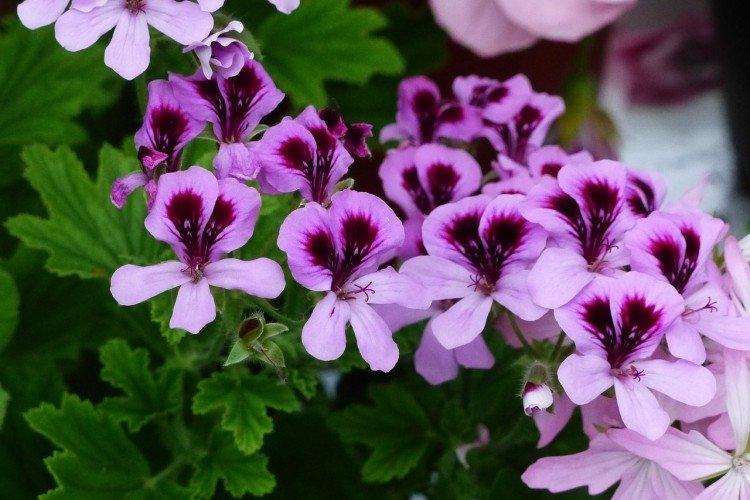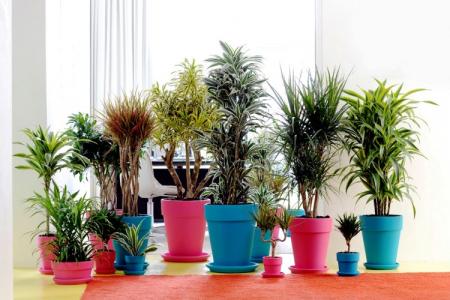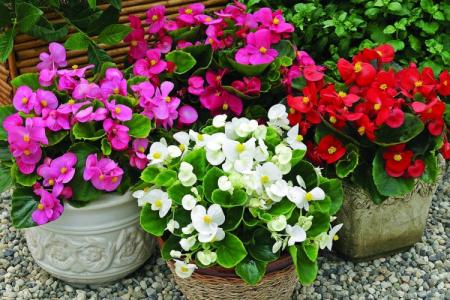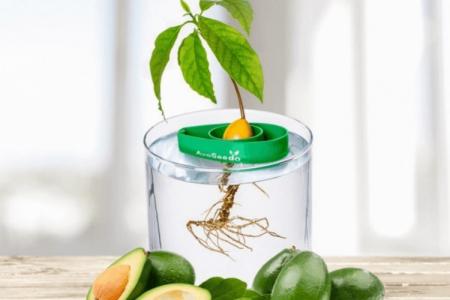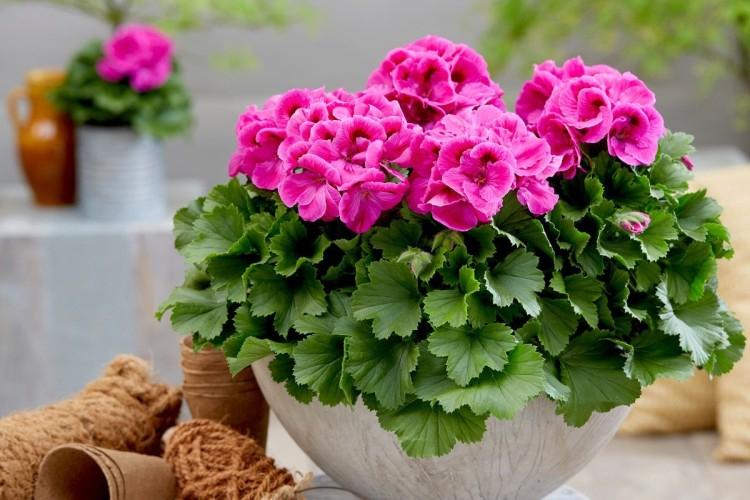
Previously, it was believed that the geranium blooming on the windowsill of the house is a symbol of the fact that peace and harmony reign in the family. Now such myths have gradually receded into the past, but flower growers still adore a beautiful and vibrant plant. We share all the details of caring for geraniums at home!
Choosing a soil for geranium
Geraniums or pelargoniums need new nutrient soil, more baking powder, and good drainage. For young plants, take the soil lighter, so you can add peat, vermiculite and perlite. For adult flowers, universal soil or black soil mixed with sand and baking powder is suitable. The composition must be neutral or, in extreme cases, slightly acidic.
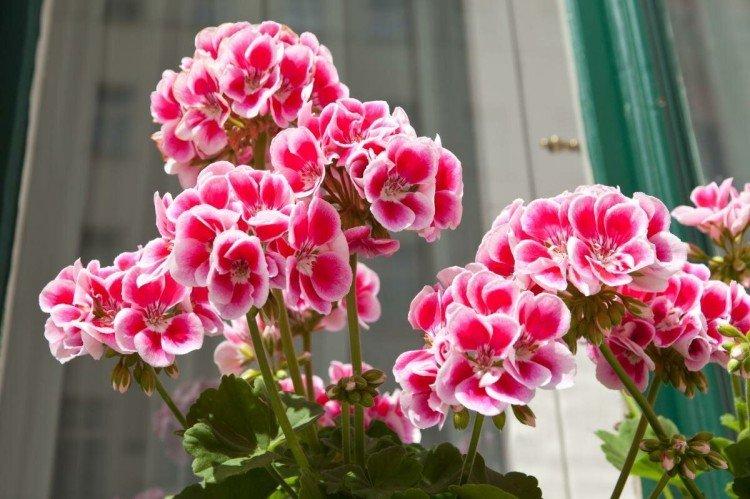
Geranium pot
The pot is chosen according to the size of the root system, but keep in mind that in small pots the plant blooms better and brighter. But if it is too large, deciduous mass grows, but not flowers. Small boxes are suitable for planting to create a beautiful composition on a balcony or window.
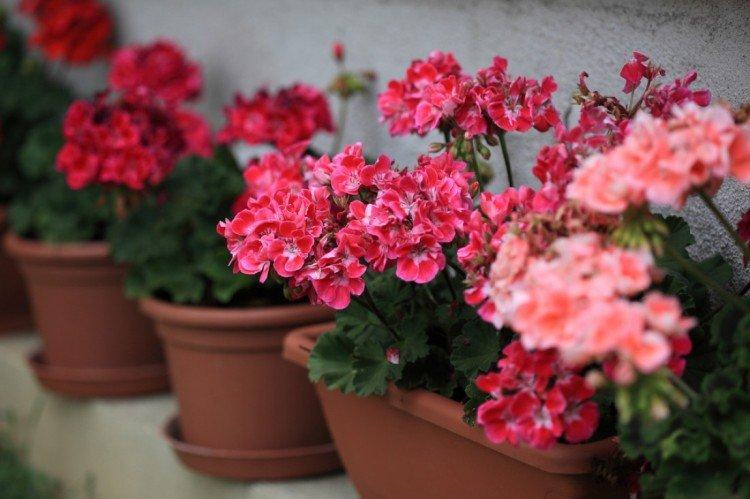
Watering and spraying geraniums
It is best to water the geraniums through the drip pan as they dry. Use settled water at room temperature and it is important that it is not too hard. In winter, reduce watering to the required minimum (once every 7-10 days) so that the roots do not rot.
Pelargonium hardly reacts to dry indoor air, so it does not need to be sprayed. It is even harmful to the leaves because they can start to darken and dry out. It is generally a drought tolerant plant, so it is always better to underfill rather than overflow.
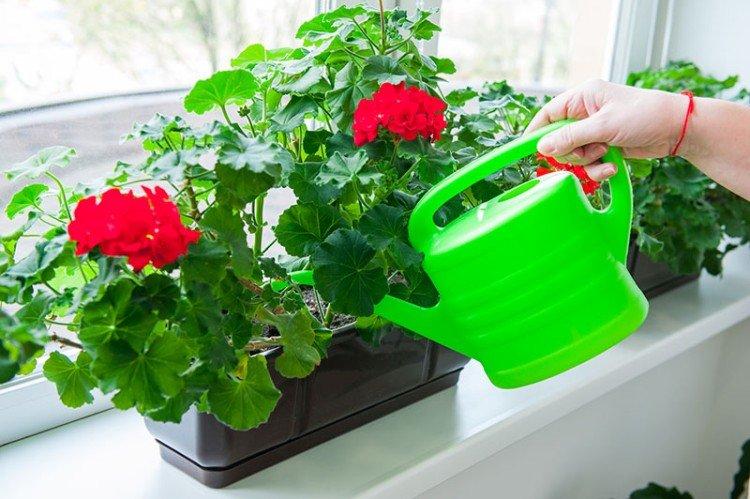
Site selection and lighting
Geranium loves fresh air, but not drafts. If you put it on the windowsill by the window, in the summer it even scares away insects with its aroma. Do not place the flowerpot directly next to the radiator or in the aisle.
Pelargonium is suitable for moderate lighting, but the sunnier, the better it blooms. In winter, we recommend using phytolamps for supplementary lighting for at least a few hours a day. If there is not enough light, the plant turns pale and shallow.
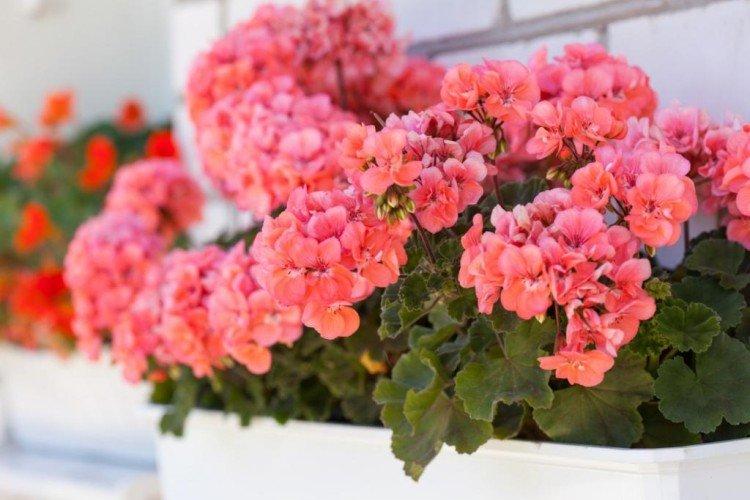
Fertilizing and feeding geraniums
It is most convenient to feed pelargonium with complex fertilizers for flowering plants from late spring to early autumn. Add more nitrogen in the spring so that the flower grows actively and regenerates after pruning. Phosphorus strengthens the root system and potassium promotes bud formation. At home, it is easier to use special sticks, granules or watering solutions.
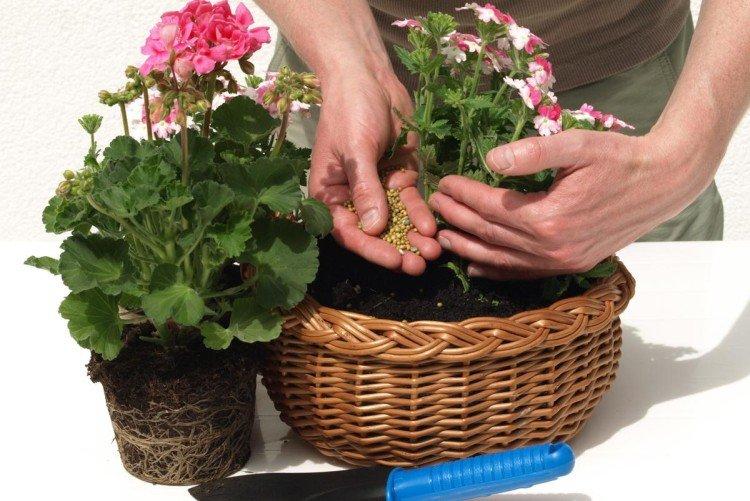
Air temperature
The best temperature for geraniums is about 18-20 degrees. If you want, lower it to 13 degrees at night, because in summer the plant feels great even on the street. In order for the flower to accumulate strength for a new bloom during the winter, it is better to lower the constant temperature to 15-18 degrees.
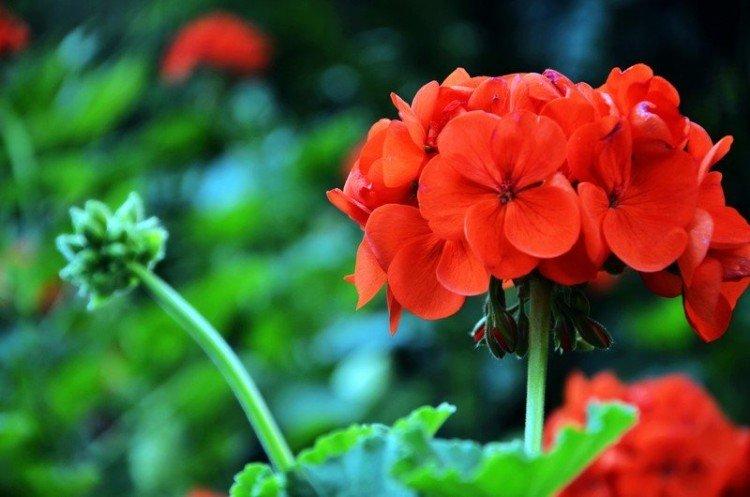
How to prune geraniums
Pruning is the most important step in caring for room geraniums, otherwise it stretches, deforms and loses its decorative effect. And it grows even worse in the future. The crown needs to begin to form when the plant is still very young.
Each shoot has dormant buds, but they will not sprout as long as the stem is pulled up. Therefore, they are stimulated by annual pruning in early spring. Shorten long shoots just above the leaf node, remove all shoots that grow inward, sprinkle the cuts with charcoal and feed the flower a little with nitrogen.
Small varieties are pruned less often - once every few years, and quite a bit. Boldly thin out the tall ones and shorten them by 2/3 - they will grow again. Geraniums of medium height can be trimmed 1 / 4-1 / 3.
Strongly growing bushes should be cut off in autumn, so that the load in winter is less. The procedure is carried out according to the same principle, but only after the geranium has completely faded. Do not water the pot 2-3 days before and after.
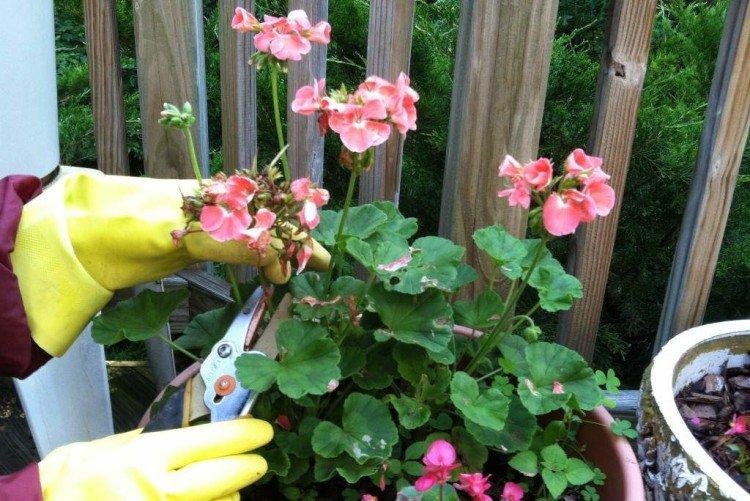
Propagation of geranium by cuttings
It is most convenient to use cuttings that remain after pruning. The optimal shoot length is about 6 cm, and so that there are 2-3 leaves on it. Leave it to lie down for a couple of hours to dry the cut, or sprinkle it with charcoal.
You can safely root the cutting directly into a pot with light soil. Or first put it in coarse sand before the first roots appear - after about 10 days. It does not need to be covered or any specific conditions created. Just provide moderate watering and make sure that no water gets on the leaves and stems.
You can leave the cutting in a glass of water and transplant from there. Make sure that the leaves do not fall into the water, and do not forget to top up it periodically. In 1-2 weeks you will have an almost complete small root system.
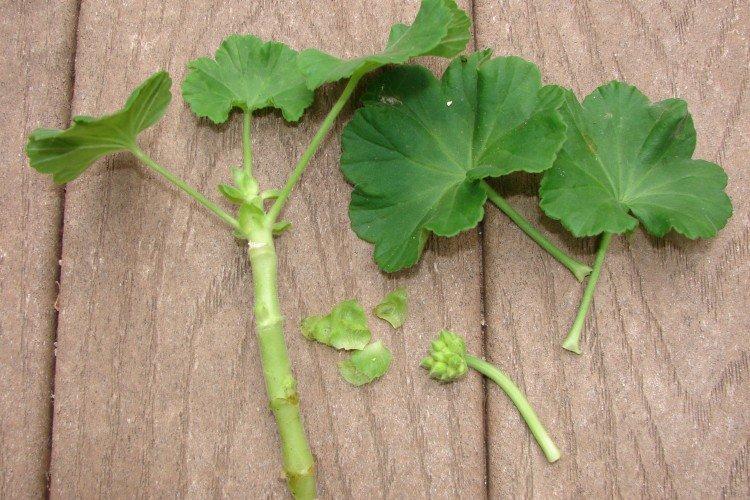
Other ways of breeding geraniums
It is worth propagating geranium by dividing the bush only if you still need to plant it. It is best to do this during the transplant. Carefully separate the area with healthy stems and buds and plant them separately. After that, the main thing is not to overmoisten the flowers. The procedure is best done in spring, when there is more sun and warmer.
Growing geraniums from seeds does not make much sense, because hybrid varieties lose their parental properties. The seeds must be scarified, because their skin is too dense. Seedlings appear in 2-3 weeks, although sometimes it takes a couple of months.
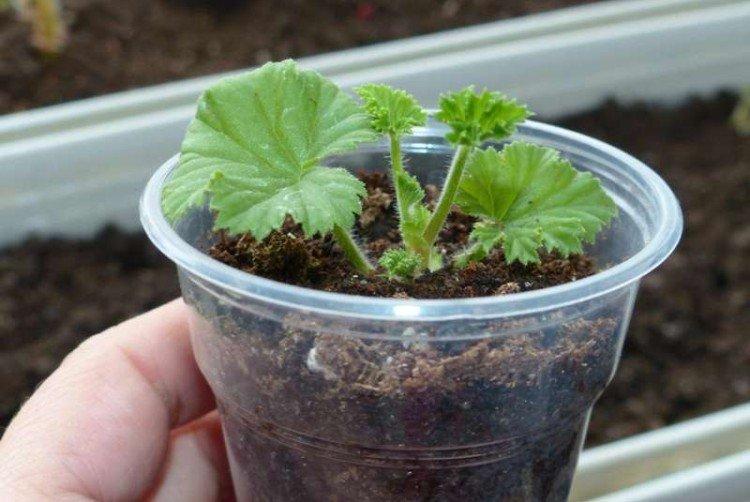
Geranium transplant
Pelargonium is transplanted when the pot has become too small for the bush. And also - after damage or waterlogging of the roots, or in order to bring street flowers into the house for the winter. To move the plant with minimal damage to it, use the transfer method.
First, drainage from expanded clay, broken brick or similar materials must be laid on the bottom of the pot. To make it easier for the plant to get out of the old flowerpot, do good on its fields. Put it in a new container with all the earthen lump and fill the empty edges around with new soil. The first full watering is best done in four days.
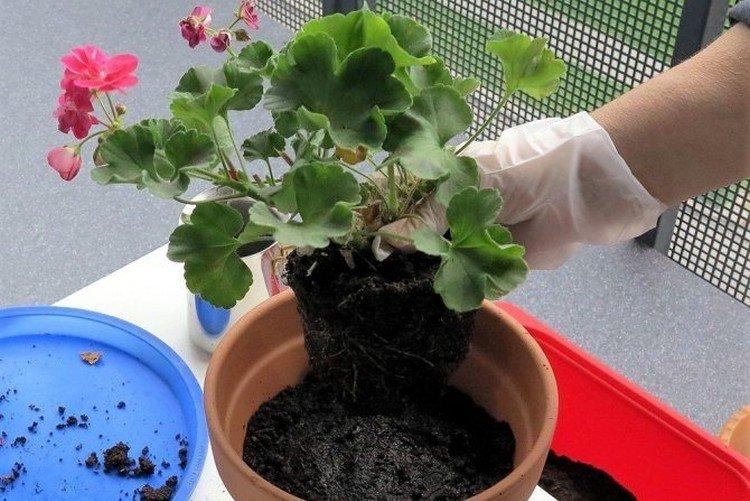
Important!
Keep in mind that geraniums have a rather peculiar smell. For many, it even causes a headache, so it is not recommended to put a pot of flowers in the bedroom, and even more so - right next to the bed.
